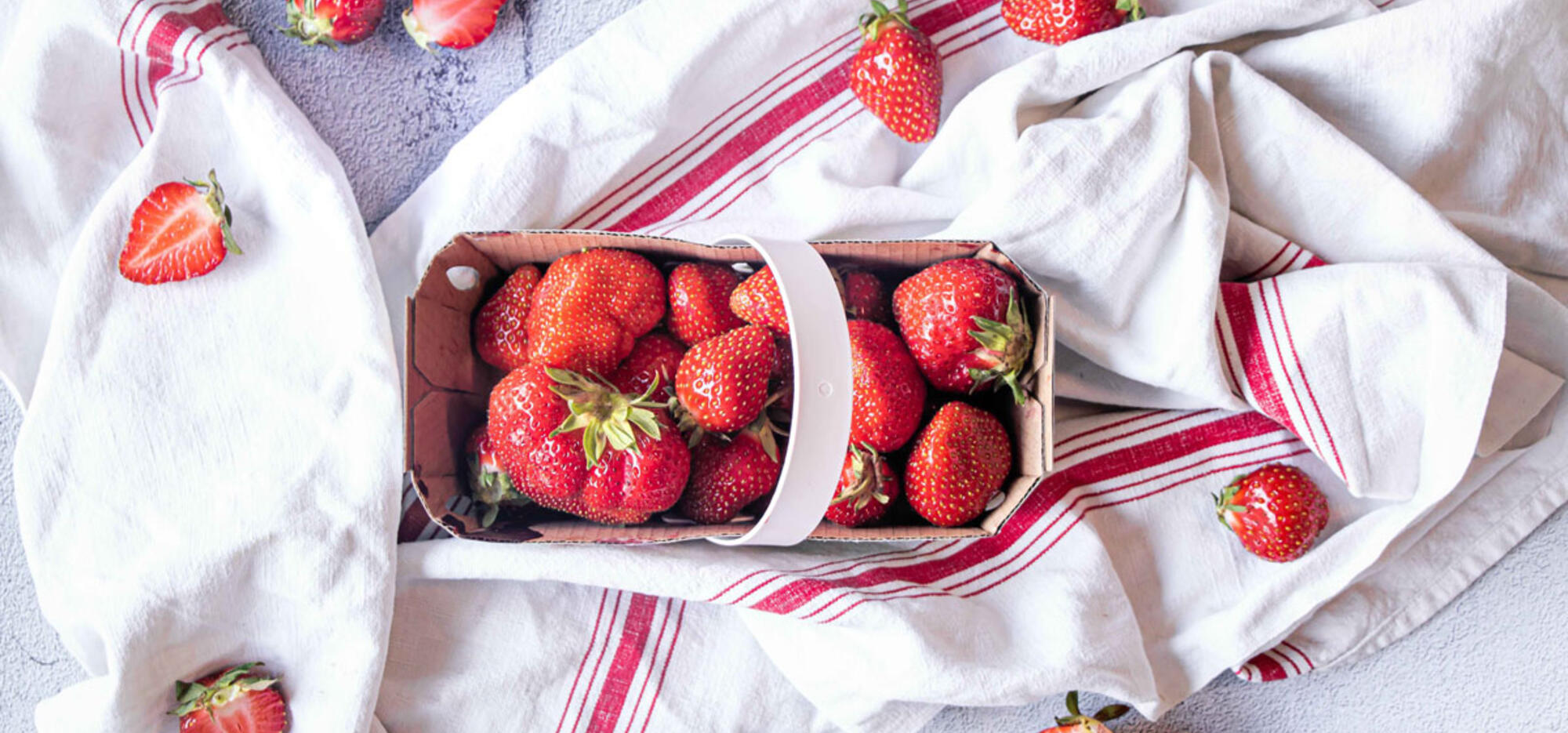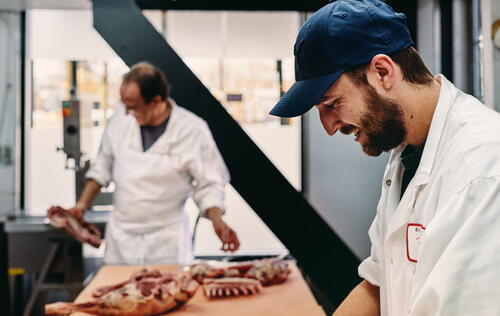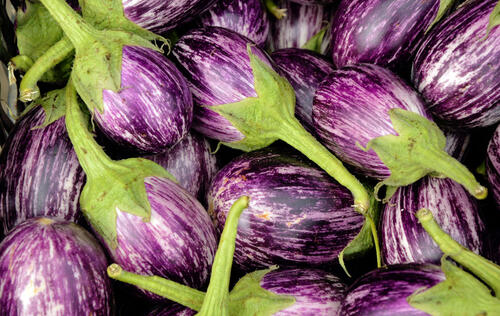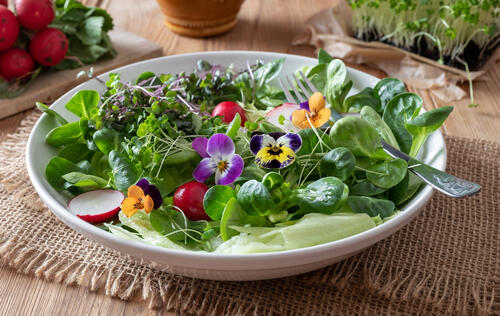The best tips for preserving food

It’s easy, and perfectly normal, to forget about a more “sensitive” and perishable food at the bottom of the fridge after a few days. Set aside some free time – 10 to 15 minutes when you return from the market – to put into practice all the tips and tricks that can save you from having to compost your poorly preserved food after a few days.
Fruits and vegetables
Fruits and vegetables are the most wasted foods because we often have no idea how to extend their shelf life. Here are a few useful tips for preserving these foods:
- Inspect the fruit and vegetables to sort them out and put the most damaged aside for early consumption.
- Remove ties and elastics, which can damage food more quickly.
Ensure proper moisture management: decompact fruits and vegetables packed too tightly, pierce bags to allow air to circulate, place an absorbent cloth inside packages and containers, and remove any plastic film that comes into direct contact with the food. There’s no need to invest a fortune in ultra-specialized containers to better preserve your fruit and vegetables: a salad spinner, simple containers or plastic bags could do the trick just fine. - More delicate fruit such as berries, peaches, pears, plums, nectarines and so on should be arranged in a single tier.
- Don’t wash fruit and vegetables until they’re ready to eat. Excess moisture from cleaning is the perfect recipe for hairy, slimy little things to appear in your fridge.
- Remove the leaves from root vegetables (beetroot, carrots, radishes, etc.) and keep them separate to eat later.
- Prepare fruit and vegetables in advance if it means they can be eaten more quickly. Melon and lettuce are good examples. Obviously, all cut fruit and vegetables should be kept in the fridge.
Pst! Some fruit and vegetables keep very well out of the fridge. A little tip: pay particular attention to the environment in which they are sold. Better still? Ask our retailer! - Separate the climacteric from the non-climacteric. War is no reason to get hurt, but ethylene is!
Climactewhat?! Climacteric!
Some fruit and vegetables (which, botanically speaking, are fruit) are climacteric, meaning that they continue to ripen after being picked, because they give off a gas called ethylene, which accelerates the ageing of non-climacteric fruit and vegetables. So it’s best to keep them separate to prevent rot from invading the kitchen.
Climacteric: Apricot, banana, cantaloupe, mango, nectarine, peach, pear, apple, plum, tomato, honeydew melon, avocado.
Non-climacteric: Pineapple, aubergine, strawberry, raspberry, blueberry, cherry, blackberry, cranberry, pumpkin, squash, cucumber, courgette, watermelon, pepper, citrus fruit, grape.
Meats, poultry and fish
I’m not telling anyone anything new by saying that highly perishable foods such as meat or poultry should be kept cold, at between 0°C and 4°C. It’s a good idea to put a thermometer in your fridge if it dates back to the 1980s to check that it’s at the right temperature. More perishable foods should not be left at room temperature for more than two hours. After that, it’s best not to eat the food, as you’re likely to find a small party of bacteria on your plate.
Here are a few tips to help you manage this type of purchase when you get home from the market and keep your food for longer!
- As soon as you get home, freeze foods that you’re not sure you’ll be able to eat quickly, preferring small individual sizes that are much easier to defrost.
- Marinating in a container before placing in the freezer is a great idea for saving time during the week.
- Take the time to transfer the food to be stored in the fridge into an airtight container. It’s essential that the meat juices don’t contaminate our beautiful Quebec strawberries, otherwise there’s no guarantee that the strawberry shortcake will turn out the way it’s supposed to.
- Generally speaking, the more meat or poultry has been processed and handled, the quicker it should be eaten. For example, minced meat can be kept in the fridge for 24 to 48 hours, whereas a roast can be kept for 3 to 5 days.
Dairy products and cheese
For all dairy products, the golden rule to apply for better preservation is the FIFO law, or First In First Out. The aim is to use the product that arrives first.
- Milk: must be refrigerated as quickly as possible when it returns from the market. Firstly for health reasons, but also because light and heat quickly deteriorate the nutritional value of milk. As our mother used to say: don’t leave the milk on the counter!
- Cream: with a shelf life of 3 to 5 days once opened, why not freeze leftovers quickly in small, pre-measured quantities, marked with the date? Perfect for impromptu recipes.
- Cheese: the wetter the cheese, the shorter its shelf life. Fresh, soft and semi-firm cheeses should be kept in an airtight container, with the exception of surface-ripened cheeses, which don’t like airtight packaging. Firm cheeses such as Parmesan should be stored in waxed paper or aluminium foil, or even better, for a zero waste option, in reusable beeswax packaging.
Tip: all dairy products and cheeses can be frozen. However, their texture will not be the same when defrosted, but they can be used in recipes afterwards.
Cereal products
How do you store these foods? If you’ve ever seen a few plump worms crawling around in your flour, you’re probably already storing it in containers that are, let’s face it, hermetically sealed and armour-plated, pest-proof, never-again. Here are a few tips to avoid having to throw away our meticulously accumulated dry food reserves (says the girl who had to throw away $75 worth of food a few years ago).
- Flour and seeds : storing flour in airtight glass, metal or hard plastic containers at room temperature offers good protection against the greedy little worms that will soon have made their way through all those bags.
- Flour: in addition to preserving regular flour, we add freezing to prevent the beautiful organic flour we find at the market from going rancid.
- Bread: keep bread at room temperature (that’s right, not at 75°C), protected from the air if you’re going to eat it quickly, or in the freezer to prevent mould. Even if it helps prevent the appearance of mould, the fridge will tend to dry out the bread crumb. Here’s a little tip: once you’ve started a loaf of bread, you can keep it cut-side down on a wooden or marble board. There’s no better way to encourage the next slice, so you can eat it more quickly without wasting a single piece.
- Milk and egg-based pastries: keep them in the fridge or buy them the same day to avoid a colourful brunch… unwanted.
Tip: bread that has hardened without mould is still safe to eat and delicious. All you need to do is run it under water quickly and place it in the oven. Consume before cooling, otherwise I won’t reimburse dentist fees.
This article was written by Édith Ouellet, a nutritionist by profession, who believes that healthy eating and sustainable eating go hand in hand. With her very own 0% guilt-tripping style, she tries to influence people to adopt eating habits that are not only healthier but also more respectful of the planet’s health. Édith is offering a brand new course to help you eat locally all year round and preserve your food better. With recipes, tips, tricks and answers to all your questions, you’ll learn the essentials for becoming a true locavore… even in Quebec!




